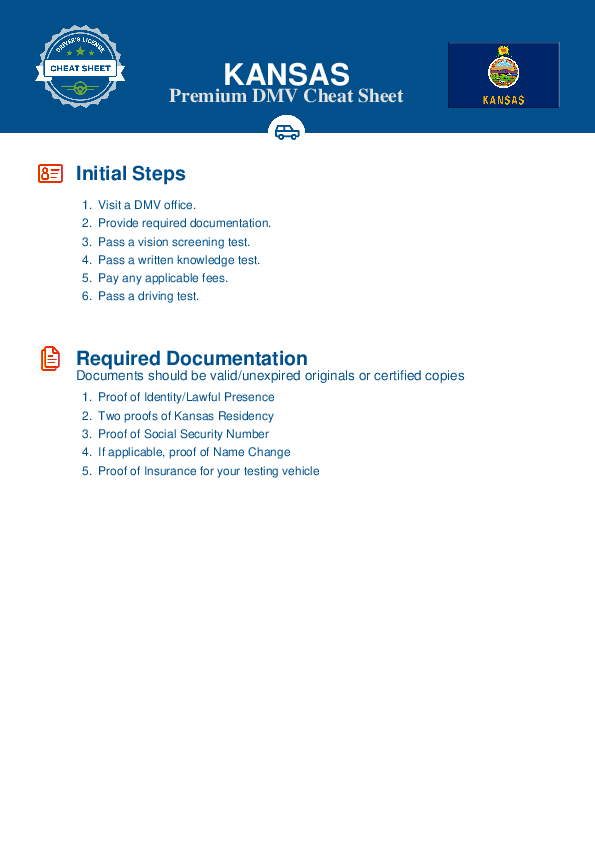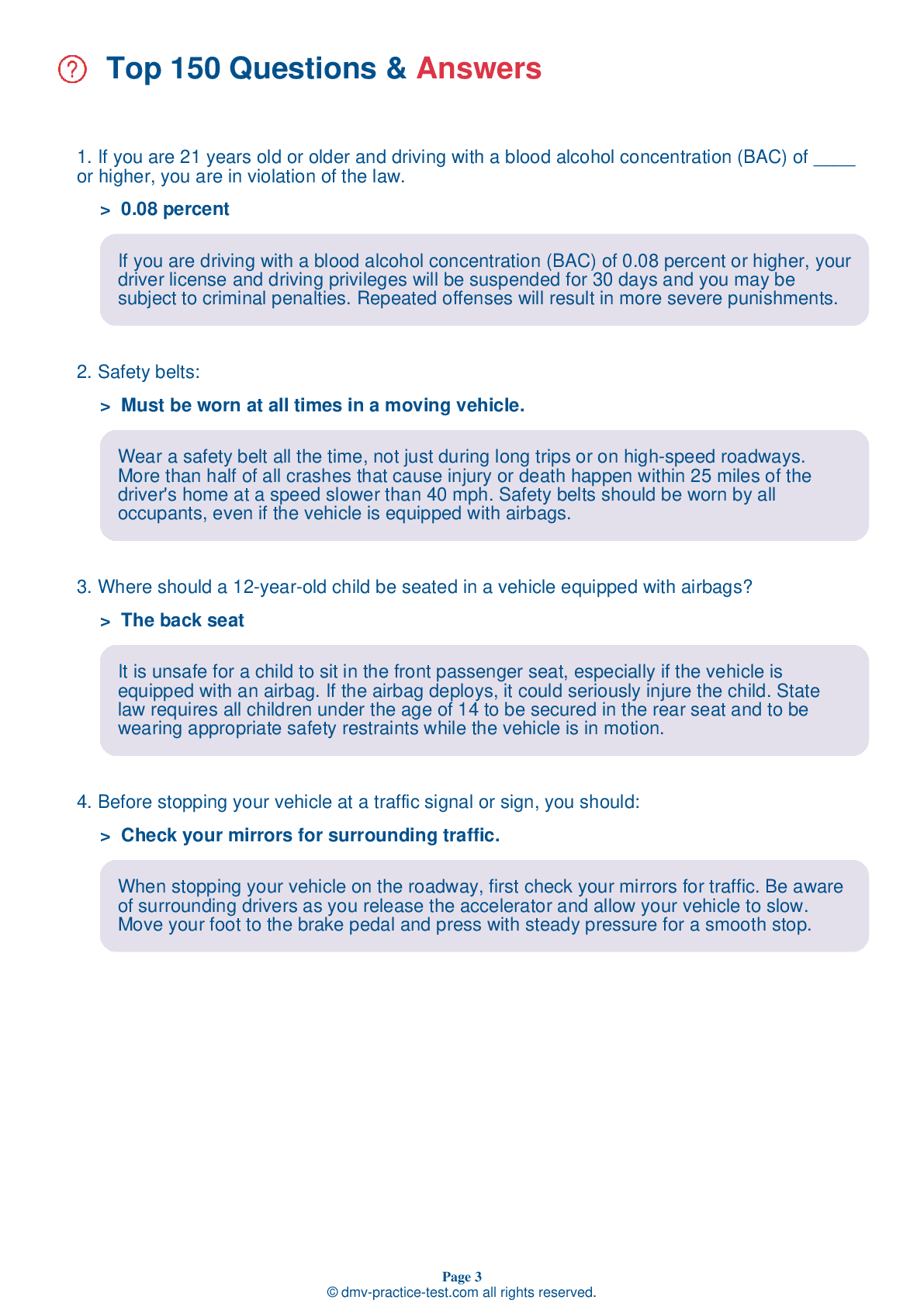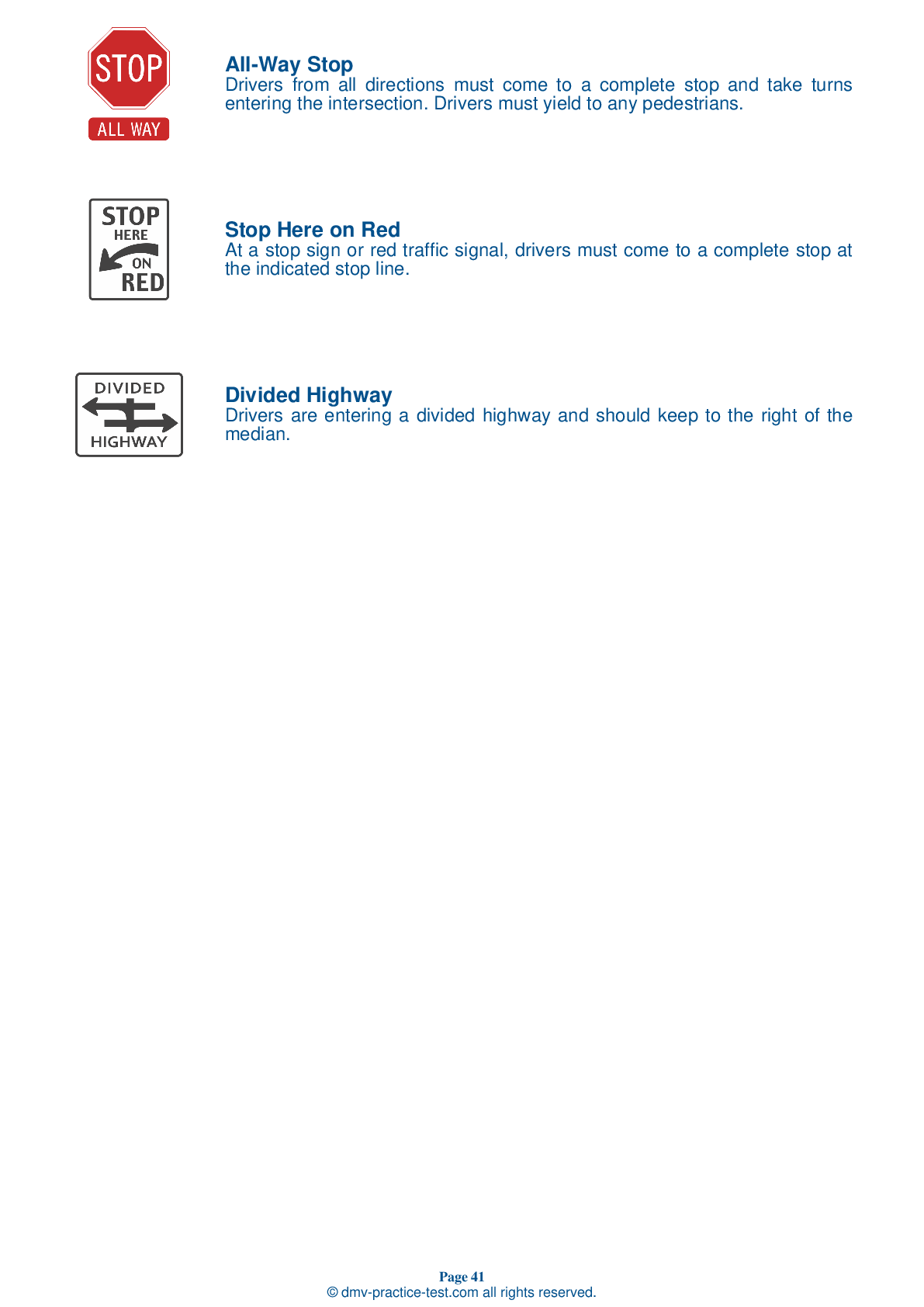FREE Kansas DMV Practice Test #1 Page 2 of 3
In Kansas, the DMV practise tests have been revised for January 2025. It includes questions based on the Kansas Driver Handbook's most essential traffic signals and regulations for 2025. Use actual questions that are very similar (often identical!) to the DMV driving permit test and driver's licence exam to study for the DMV driving permit test and driver's licence exam.
On the practise exam, each question gets a tip and explanation to help you remember the concepts. The written component of the official Kansas DMV test will include questions about traffic rules, traffic signs, and driving statutes, as well as information from the Driver Handbook.
To obtain a passing grade, you must correctly answer 20 of the 25 questions. Take our DMV practise exam to help you prepare for your Kansas instruction permit or driver's licence.
The DMV exam is available in several languages.
Using any kind of testing assistance will result in an automatic fail, and the DMV may take additional action against your driver's licence, so stay away from it.
9 . An instructional permit allows you to:
Holding an instructional permit allows you to drive only when a licensed adult is accompanying you in the front seat. The licensed adult must be at least 21 years old and have at least one year of driving experience.
10 . This sign means:
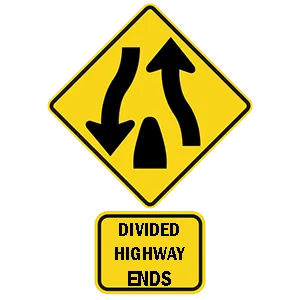
Warning signs are usually yellow with black markings. This sign warns that the divided highway ends ahead. Prepare to change lanes or shift lane position.
11 . When a school bus is stopped ahead on your side of the road with its red lights flashing, you must:
The flashing overhead lights and stop arm on a school bus will be activated when the bus is stopped to load or unload students. If approaching a bus using these signals, you may not proceed until the red lights have stopped flashing and the stop arm has been retracted. Never pass a school bus that is dropping off or picking up students.
12 . If there is a deep puddle on the road ahead, you should:
To prevent skidding on slippery surfaces, avoid especially slippery areas, such as ice patches, wet leaves, oil, or deep puddles. The safest surface for driving is a dry, solid surface.
13 . If a child is about to run into the street, you should:
If there is danger, you may need to sound a sharp blast on your horn. Do this when a child or any other pedestrian is about to enter into the street in front of your moving vehicle.
14 . Safety belts:
Wear a safety belt all the time, not just during long trips or on high-speed roadways. More than half of all crashes that cause injury or death happen within 25 miles of the driver's home at a speed slower than 40 mph. Safety belts should be worn by all occupants, even if the vehicle is equipped with airbags.
15 . A broken yellow line down the center of a road indicates that:
When broken yellow lines separate the lanes of traffic on a two-lane roadway, any driver may pass when there is no oncoming traffic.
16 . This sign is a warning that you are approaching:
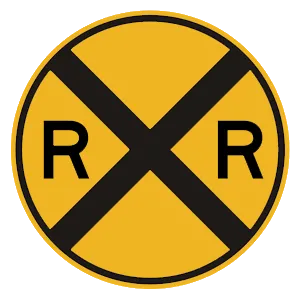
A round sign means you are approaching a railroad crossing. This sign is posted a few hundred feet in front of the tracks and tells drivers to slow down, look, listen, and prepare to stop.
See the exact questions that will be on the 2025 Kansas DMV exam.
99.2% of people who use the cheat sheet pass the FIRST TIME
LT gives us an insight on how the cheat sheet provided her with all the study questions she needed before taking her test.
Joe initially studied with the handbook and failed his test, he eventually found us online, studied and pass his test the first time around.
